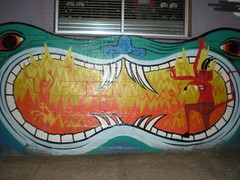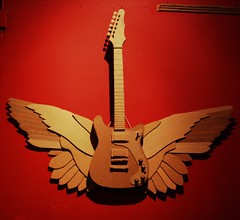
The students arrived in the city the first week of September and the search for graffiti was on almost immediately. It was serendipitous that on our first "outdoor" field trip to the High Line, we spotted graffiti from the elevated park that proclaimed "the city is our canvas."
The students were on the lookout for graffiti and street art throughout the five boroughs of New York City. It could be any size, any type (tag, mural, throw-up, piece, etc.) and it could be located anywhere. They could photograph as much as they wanted, but would be responsible for uploading at least 5 to 10 images to our Flickr site. Students were also assigned the task of creating their own Blackbook (a graffiti writer's sketchbook) during the semester-long program and to create their own personal "tag" as a design project after they developed more of a sense of what tags looked like throughout the city.
Students used a combination of smart phones and digital cameras to collect the images. If their apparatus did not have GPS, Jeremy created instructions for geo-mapping the image after it was uploaded to Flickr.
The students were asked to catalog their uploaded images in Catalogr, a software program designed by Jeremy. We had a short set of metadata and drop-down menu's for them to use in the process. Though the process of uploading images to Flickr and cataloging to Catalogr had many steps, the students found their way through the process with the help of tutorial videos and printed instructions without any major problems.
The images collected to date are varied, number about 300, and, according to Jeremy, are located in 37 different neighborhoods in the city.
Work on a website to display the images according to our metadata fields and locations continues.






